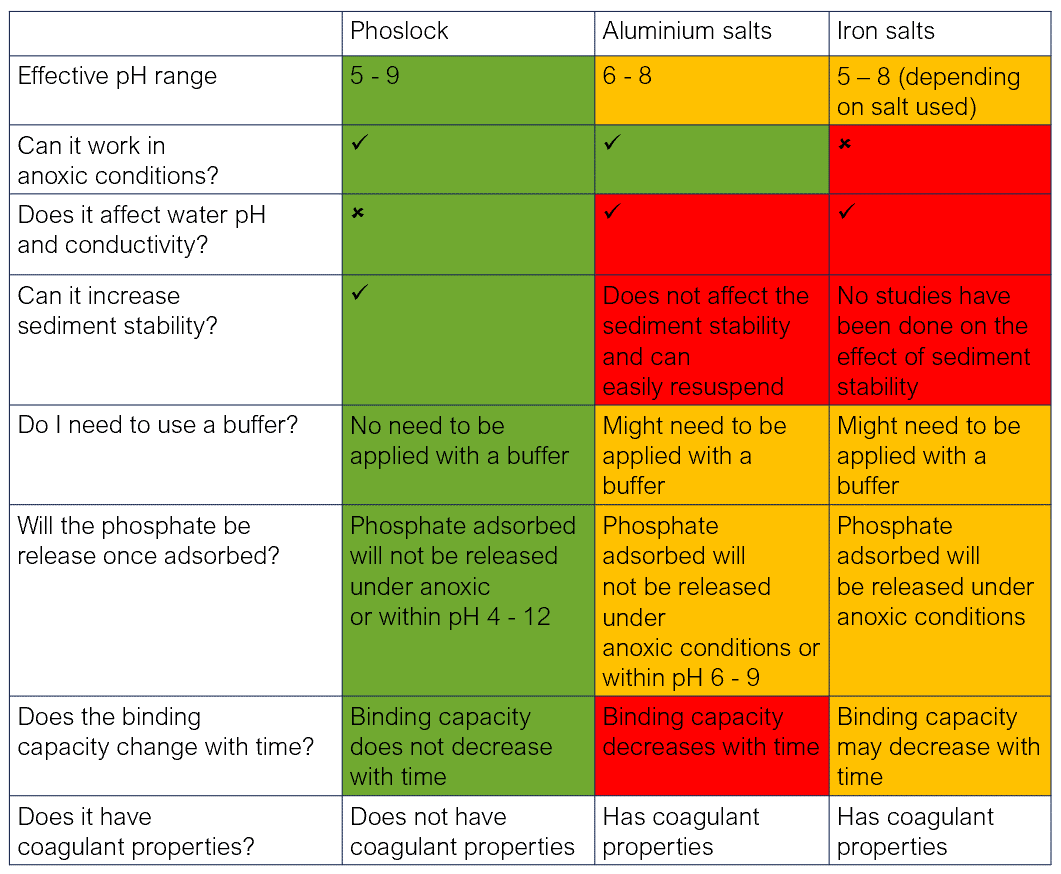14 Jul, 2023
‘Plan A’, why Autumn is the best time to remediate waterways suffering from phosphorus pollution with Phoslock.
Phosphorus is essential to life, but too much phosphorus can lead to nutrient pollution and can have a negative impact on water quality. In excess, it can also affect aquatic ecosystems negatively. Nutrient pollution management is a very complex global challenge, but one that can be prevented or controlled. At PET, we introduce ‘Plan A’, a plan to remediate waterways in Autumn through until early Spring with Phoslock. Discover why this is the best time of the year to treat lakes and ponds suffering from phosphorus pollution.
An excess of nutrients can lead to undesirable changes to lake ecosystems, which eventually leads to the deterioration in the structure and function of a waterbody. Even if catchment management reduces external sources of phosphorus entering lakes, it can take several decades for a lake to begin to recover due to legacy phosphorus. This legacy phosphorus can remain within the lake system and be cycled from the sediment to the overlying water column. During autumn, organic material in lakes and ponds break down and the nutrients within are returned to the sediment. Autumn through to early spring is the optimum time to apply Phoslock, as the majority of the phosphorus in the system is returned to the bed sediments. Autumn is also a time when many lakes and ponds are less used by people, there is less disturbance to the water and sediment which prevents nutrient release from bed sediments.
Remediate waterways in autumn through until early spring. Here are some of the benefits of treating lakes and ponds with Phoslock in the cooler seasons:
- The majority of the available phosphorus in the waterbody is in the sediments, which makes a Phoslock treatment more effective.
- Lakes and ponds are less used by people in the cooler months, so there is less risk of disturbing the remediation process.
- Applying Phoslock during the cooler seasons is a preventative, proactive measure with an aim to inhibit waterbody closures during spring and summer months due to poor water quality.
Are you concerned about phosphorus pollution in your lake or pond? Autumn through to early spring is the best time of year to take action to apply Phoslock! For the best phosphorus remediation methods, get in touch with PET water specialists.

Photo: Kralingse Plas lake, after the application of Phoslock. View Case Study.
An effective solution against phosphorus pollution is Phoslock, a formulation of bentonite and Lanthanum. Developed in the 1990s by the Australian Government Agency, The Commonwealth Scientific and Industrial Research Organisation, Phoslock has been extensively tested by regulators and independent scientific institutions worldwide. It is produced according to strict water quality control guidelines and is produced under a Quality Management System that complies with ISO – 9001:2015. It is accredited by the Water Quality Association as meeting the NSF/ANSI/CAN 60 standard for chemicals being applied to drinking water.
How Phoslock Works?
Phoslock has clear benefits for phosphorus remediation in lakes and ponds over similar products on the market:

Download the full Phoslock brochure.
Act now to improve freshwater quality.
Are you considering remediating a lake or pond to treat phosphorus pollution? It is important to consult with a qualified professional. To know more about the difference Phoslock can make to freshwaters health, contact a PET water quality specialist and return your waterway back to good health.
Don’t leave it to the last minute! Take action to remediate phosphorus pollution during Autumn, so your waterways stay healthy during spring and summer. Let’s take action to improve water quality and protect aquatic ecosystems.